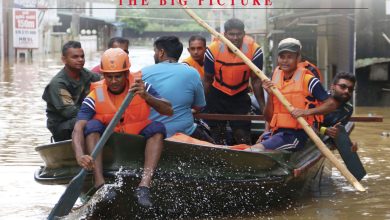DEBT OUTLOOK
OUT OF THE BOX DEBT REPAYMENTS!
Zulfath Saheed points to what may lie ahead for Sri Lanka’s debt servicing programme
Sri Lanka’s external debt obligations have continued to pose challenges to successive governments and the postwar era has proven particularly perplexing in the light of its loan portfolio – especially in the case of certain large-scale infrastructure development projects.

The country’s debt levels soared to a point where assistance from the likes of the IMF was sought in an apparent move to prevent the economy from facing collapse.
Events such as the October 2018 constitutional crisis and 4/21 have also done little to allay fears – they have meant that debt repayments remain an ongoing concern for our island nation.
DEBT SWAPPING Earlier this year, Sri Lanka announced plans to pay down debts worth some US$ 250 million in legacy oil credit due to Iran in a somewhat unorthodox manner – i.e. by using one of its key exports (tea) as a form of currency.
Not only could this ensure that the state doesn’t flout sanctions imposed by the US in 2016 but it also looks to regain market share for Ceylon Tea in Iran, according to the authorities concerned.
Under the ‘tea for debt’ barter deal with Iran, the Ceylon Petroleum Corporation (CPC) is expected to pay the rupee equivalent of five million dollars to the Sri Lanka Tea Board (SLTB) over a period of 50 months.
This in turn will pay those who export tea to Iran while taking into consideration prevailing currency exchange rates until the debts are settled.

IMF REVIEW Meanwhile, the International Monetary Fund reached a staff level agreement on the sixth review of Sri Lanka’s Extended Fund Facility in late September.
On completion of the staff visit led by Manuela Goretti, the IMF noted that it welcomes “the [Sri Lankan] authorities’ commitment to fiscal discipline and institutional reforms, to anchor debt sustainability while providing space to support the ongoing recovery and social goals.”
The global lender also pointed out that “the new Central Bank Act will be a landmark reform in the road map towards flexible inflation targeting, strengthening the Central Bank of Sri Lanka’s mandate, governance, accountability and transparency in line with international best practice … Trade and investment liberalisation, SOE [state owned enterprise] reforms and stepped up anticorruption efforts will be important to bolster Sri Lanka’s competitiveness and medium-term growth.”
Sri Lanka’s monetary authority did adopt temporary measures to support the tourism industry and ease credit conditions in the aftermath of 4/21. This includes a debt service moratorium and caps on bank interest rates.
The IMF cautions that “these exceptional measures should be lifted as soon as credit conditions stabilise to avoid distortions to the financial system amid weaker credit quality and falling profitability.”
CREDIT RATING Also, Fitch Ratings affirmed Sri Lanka’s long-term foreign currency issuer default rating (IDR) at ‘B’ with a ‘stable’ outlook in late September.
In its commentary, Fitch stated that “Sri Lanka’s ‘B’ rating balances high government debt and contingent liabilities, a challenging external financing profile, and subdued economic growth against higher human development standards and per capita income levels compared
with peer medians.”
While projecting foreign exchange reserve coverage to be maintained at approximately three months of current external payments through 2021, the rating agency observes: “Sri Lanka’s external debt obligations (principal and interest) remain substantial over 2020-2023 with nearly US$ 19 billion due and its external liquidity ratio remains far weaker than peer medians. A prolonged period of policy uncertainty accompanied by an adverse shift in investor sentiment could exacerbate Sri Lanka’s external refinancing risks.”
NATIONAL DEBT The country is in the midst of an election cycle with the presidential poll on 16 November followed by parliamentary elections in 2020. In Fitch’s view, “the risk of policy slippage and political tensions resurfacing closer to the elections remains high.”
It continues: “High government debt and large interest payments remain a key credit weakness. Sri Lanka’s gross general government debt was about 83 percent of GDP at end 2018; far greater than the current ‘B’ median of 56.4 percent. Interest payments as a share of revenues were very high at about 44 percent (current peer median 10.4%), highlighting the relatively weak structure of Sri Lanka’s public finances.”
“In addition, foreign currency debt is nearly half of total government debt and leaves public finances vulnerable to renewed currency depreciation,” Fitch adds.
Shrinking Sri Lanka’s sizable debt obligations requires sustained economic progress and a stable policy regime. Whether this will materialise in the aftermath of the forthcoming elections is the million dollar question.
And for the answer to this burning question, we will have to wait not until 16 November but also the general election that will follow next year.





